Death and funeral of Hirohito
On 7 January 1989, Hirohito, the 124th Emperor of Japan according to the traditional order of succession, died in his sleep at 6:33 am after suffering from intestinal cancer for some time. He was 87. The late emperor's state funeral was held on 24 February, when he was buried near his parents at the Musashi Imperial Graveyard in Hachiōji, Tokyo.
Illness and death
On 22 September 1987, the Emperor underwent surgery on his pancreas after having digestive problems for several months. The doctors discovered that he had duodenal cancer. The Emperor appeared to be making a full recovery for several months after the surgery. About a year later, however, on 19 September 1988, he collapsed in his palace, and his health worsened over the next several months as he suffered from continuous internal bleeding.
On 7 January 1989, at 7:55 am, the Grand Steward of Japan's Imperial Household Agency, Shōichi Fujimori, officially announced the death of Emperor Hirohito at 6:33 am, and revealed details about his cancer for the first time. Hirohito was survived by his wife, five children, ten grandchildren and one great-grandchild.[1]
"Departed Emperor"

Emperor Hirohito's death ended the Shōwa era. He was succeeded by his son, Crown Prince Akihito. With Emperor Akihito's accession, a new era began: the Heisei era, effective at midnight the day after Emperor Hirohito's death. The new Emperor's formal enthronement ceremony was held in Tokyo on 12 November 1990.
From 7 January until 31 January 1989, the late Emperor's formal appellation was Taikō Tennō (大行天皇, "Departed Emperor"). The late Emperor's definitive posthumous name, Shōwa Tennō (昭和天皇), was officially determined on 13 January and formally released on 31 January by Noboru Takeshita, the Prime Minister.
State funeral
On Friday, 24 February the Emperor Shōwa's state funeral was held, and unlike that of his predecessor, although formal it was not conducted in a strictly Shinto manner.[2] It was a funeral carefully designed both as a tribute to the late Emperor and as a showcase for the peaceful, affluent society into which Japan had developed during Hirohito's reign.[3]
Unlike the Emperor Taisho's funeral 62 years earlier, there was no ceremonious parade of officials dressed in military uniforms, and there were far fewer of the Shinto rituals used at that time to glorify the Emperor as a near-deity. These changes were meant to highlight that the Shōwa Tennō's funeral would be the first of an emperor under the postwar democratic Constitution, and the first imperial funeral held in daylight.[3]
The delay of 48 days between his death and the funeral was about the same as that for the previous Emperor, and allowed time for numerous ceremonies leading up to the funeral.[3] The late Emperor's body lay in three coffins; some personal items such as books and stationery were also placed into them.
The weather on the day of the funeral was cold; there was a grey sky that drenched Tokyo with a steady rain.[2]
Ceremony at the Imperial Palace
The ceremonies began at 7:30 a.m. when Emperor Akihito conducted a private Ceremony of Farewell for his father in the Imperial Palace.[2]
Funeral procession through Tokyo
At 9:35 a.m., a black motor hearse carrying the body of Hirohito left the Imperial Palace for the two-mile-long drive to the Shinjuku Gyoen Garden, where the Shinto and state ceremonies were held.[2] High, piercing notes of reeds broke the silence as the hearse bearing the Emperor's coffin drove over a stone bridge and out through the Imperial Palace gates. The air shook with the sound of cannon and a brass band played a dirge composed for the funeral of Hirohito's great-grandmother in the late 19th century.[3]
The motor hearse was accompanied by a procession of 60 cars. The route of the cortege through Tokyo was lined by an estimated 800,000 spectators and 32,000 special police, who had been mobilized to guard against potential terrorist attacks.[2]
The path of the funeral procession passed the National Diet, the democratic core of modern Japan; and the National Stadium, where the emperor opened the 1964 Summer Olympics and heralded Japan's postwar re-emergence.[2]
Ceremonies at Shinjuku Gyoen Garden
The 40-minute procession, accompanied by a brass band, ended when it pulled into the Shinjuku Gyoen Garden, until 1949 reserved for the use of the Imperial family and now one of Tokyo's most popular parks.[3]
At the Shinjuku Gyoen Garden, the funeral ceremonies for the Shōwa Tennō were conducted in a Sojoden, a specially constructed funeral hall. The funeral hall was constructed of Japanese cypress and held together with bamboo nails, in keeping with ancient imperial tradition.[2]
The official guests were seated in two white tents located in front of the funeral hall. Because of the low temperatures, many guests used chemical hand-warmers and wool blankets to keep warm as the three-hour Shinto and state ceremonies progressed.[2]
Palanquin procession
The Shōwa Tennō's coffin was transferred into a palanquin made of cypress wood painted with black lacquer. Attendants clad in long gray robes, narrow tall black hats and black outsized wooden sandals, bearing white and yellow banners, shields and signs of the sun and moon, led a 225-member procession. Musicians played gagaku, the atonal court music. Next came gray-robed attendants carrying two sacred sakaki trees draped with cloth streamers and ceremonial boxes of food and silk cloths to be offered to the spirit of the late Emperor.[3]
In a nine-minute procession, 51 members of the Imperial Household Agency, clad in traditional gray Shinto costumes, carried the 1.5 ton Sokaren (Imperial Palanquin) containing the three-layered coffin of the Shōwa Tennō into the funeral hall, as they walked up the aisle between the white tents with domestic and foreign dignitaries.[2][3]
Behind the coffin walked a chamberlain dressed in white, who carried a platter with a pair of white shoes that tradition says the deceased monarch will wear to heaven. Flutes, pipes and an occasional drum beat sounded as the procession entered the ceremonial grounds.[2] The new Emperor, Akihito, and Empress Michiko, carrying their own large umbrellas, followed the palanquin with other family members.[3]
The procession passed through a small wooden torii gate, the Shinto symbol marking the entrance to sacred space, and filed into the Sojoden.[3]
Shinto ceremony
The events in the Sojoden were divided into a religious Sojoden no Gi ceremony, followed by the state Taiso no Rei ceremony.[2]
When the procession entered the funeral hall, the Shinto portion of the funeral began and a black curtain partition was drawn closed. It opened to reveal a centuries-old ceremony. To the accompaniment of chanting, officials approached the altar of the Emperor, holding aloft wooden trays of sea bream, wild birds, kelp, seaweed, mountain potatoes, melons and other delicacies. The foods, as well as silk cloths, were offered to the spirit of the late Emperor. The chief of ceremony, a childhood classmate and attendant of Hirohito, then delivered an address, followed by Emperor Akihito.[3]
The funeral continued as the black curtain closed, signalling the end of the Shinto portion of the funeral.[3]
State ceremony
As the curtain parted again, Japan's Chief Cabinet Secretary opened the state portion of the funeral. At noon, he called for a minute of silence throughout Japan.[3] Prime Minister Takeshita delivered a short eulogy, in which he said that the reign of the late emperor would be remembered for its eventful and tumultuous times, including the Second World War and the eventual reconstruction of Japan.[2] One by one, foreign dignitaries approached the altar and paid their respects. Some merely inclined their heads; some bowed slightly.[3]
Ceremony at the Imperial Graveyard

Following the state ceremony, the Shōwa Tennō's coffin was taken to the Musashi Imperial Graveyard in the suburban city of Hachiōji for burial. At Emperor Taishō's funeral in 1927, the trip to the Musashi Imperial Graveyard was carried out as a 3-hour procession, but at the Shōwa Tennō's funeral, the trip was made by motor hearse and cut to 40 minutes.[2] Several hours of ceremonies followed there, until the late emperor was laid to rest at nightfall, the traditional time to bury emperors.[3]
Visitors and guests
Summary
An estimated 200,000 people lined the site of the procession – far fewer than the 860,000 that officials had projected.[3] The Shōwa Tennō's funeral was attended by some 10,000 official guests. A total of 163 countries (out of 166 at that time) and 27 international organizations sent representatives to the event. More than 70 world leaders attended the funeral of the Emperor.
In total there were 55 heads of state, 12 heads of government, 19 deputy heads of state, 14 members of royal families, 30 foreign ministers and other officials present, all of which required placing Tokyo under an unprecedented blanket of security. Because of security concerns for the dignitaries and because of threats from Japanese left-wing extremists to disrupt the funeral, authorities decided to scrap many of the traditional events that normally accompany funerals for Japanese monarchs. Officials also overrode protocol to give US president Bush a front-row seat, even though tradition would have put him toward the back, at the fifty fifth seat,[4] because of his short time in office. Bush, who arrived in Tokyo on Thursday afternoon, attended the funeral on Friday afternoon and departed for China on Saturday.[2]
Japanese officials said it was the biggest funeral in modern Japanese history, and the unprecedented turnout of world leaders was recognition of Japan's emergence as an economic superpower. The Shōwa Tennō was the longest-reigning emperor in Japanese history and the last of the major leaders from World War II. Many also viewed the burial of the Shōwa Tennō as the nation's final break with a militaristic past that plunged much of Asia into war in the 1930s.[2] The late emperor's wife, the Empress Dowager Nagako, did not attend the ceremonies due to a lingering back and leg malady.[2]
The event hold records for the largest gathering of international leaders in world history at that time for a state funeral, surpassed the funeral of Josip Broz Tito in 1980. It would stand for the next 16 years until Pope John Paul II’s in 2005.
List
Source :[5]
.svg.png.webp) Emperor of Japan Akihito and Prime Minister Noboru Takeshita
Emperor of Japan Akihito and Prime Minister Noboru Takeshita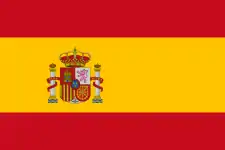 King of Spain Juan Carlos I and Prime Minister Felipe Gonzalez
King of Spain Juan Carlos I and Prime Minister Felipe Gonzalez King of Sweden Carl XVI Gustaf and Prime Minister Carl Bildt
King of Sweden Carl XVI Gustaf and Prime Minister Carl Bildt.svg.png.webp) King of Belgium Baudouin and Prime Minister Wilfried Martens
King of Belgium Baudouin and Prime Minister Wilfried Martens Queen of the Netherlands Beatrix and Prime Minister Ruud Lubbers
Queen of the Netherlands Beatrix and Prime Minister Ruud Lubbers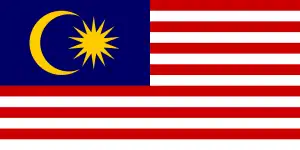 Crown Prince of Malaysia Tuanku Muhriz and Premier Mahathir Mohamad
Crown Prince of Malaysia Tuanku Muhriz and Premier Mahathir Mohamad Crown Prince Vajiralongkorn of Thailand and Premier Chatichai Choonhavan
Crown Prince Vajiralongkorn of Thailand and Premier Chatichai Choonhavan.svg.png.webp) King of Lesotho Moshoeshoe II
King of Lesotho Moshoeshoe II King of Morocco Hassan II
King of Morocco Hassan II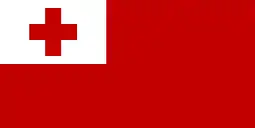 King of Tonga Tāufaʻāhau Tupou IV
King of Tonga Tāufaʻāhau Tupou IV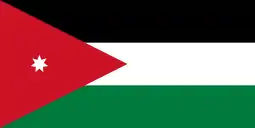 King of Jordan Hussein
King of Jordan Hussein Sultan of Brunei Hassanal Bolkiah
Sultan of Brunei Hassanal Bolkiah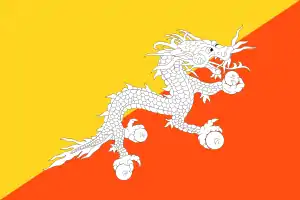 King of Bhutan Jigme Singye Wangchuck
King of Bhutan Jigme Singye Wangchuck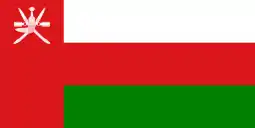 Sultan of Oman Qaboos bin Said al Said
Sultan of Oman Qaboos bin Said al Said Prince Philip, Duke of Edinburgh
Prince Philip, Duke of Edinburgh Prince of Liechtenstein Hans Adam
Prince of Liechtenstein Hans Adam Grand Duke of Luxembourg Jean
Grand Duke of Luxembourg Jean Sovereign Prince of Monaco Rainier III
Sovereign Prince of Monaco Rainier III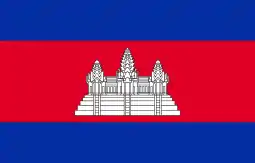 Prince of Cambodia Norodom Ranariddth
Prince of Cambodia Norodom Ranariddth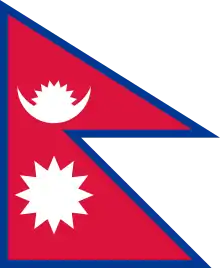 Prince of Nepal Gyanendra Bir Bikram Shah
Prince of Nepal Gyanendra Bir Bikram Shah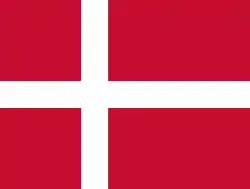 Henrik, Prince Consort of Denmark
Henrik, Prince Consort of Denmark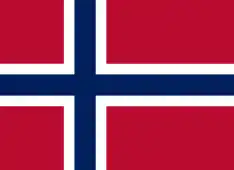 Crown Prince Harald V of Norway
Crown Prince Harald V of Norway Secretary General of the United Nations Javier Pérez de Cuellar
Secretary General of the United Nations Javier Pérez de Cuellar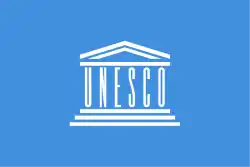 Director General of UNESCO Federico Mayor Zaragoza
Director General of UNESCO Federico Mayor Zaragoza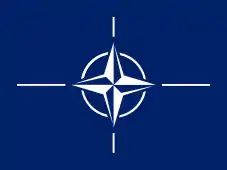 Secretary General of NATO Manfred Woerner
Secretary General of NATO Manfred Woerner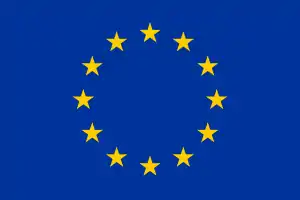 President of the European Commission Jacques Delors
President of the European Commission Jacques Delors- Managing Director of the IMF Michel Camdessus
 Secretary General of the OECD Jean-Claude Paye
Secretary General of the OECD Jean-Claude Paye President of the United States George H. W. Bush
President of the United States George H. W. Bush.svg.png.webp) Governor General of Canada Jeanne Sauve
Governor General of Canada Jeanne Sauve First Lady of Mexico Cecilia Occelli de Salinas
First Lady of Mexico Cecilia Occelli de Salinas.svg.png.webp) President of Brazil Jose Sarney
President of Brazil Jose Sarney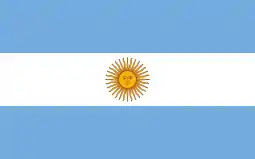 President of Argentina Raul Alfonsin
President of Argentina Raul Alfonsin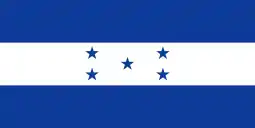 President of Honduras Jose Azconar Hoyo
President of Honduras Jose Azconar Hoyo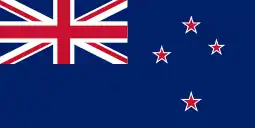 Governor General of New Zealand Paul Reeves
Governor General of New Zealand Paul Reeves.svg.png.webp) Governor General of Australia Bill Hayden
Governor General of Australia Bill Hayden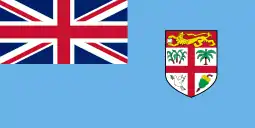 President of Fiji Penaia Kanatabatu
President of Fiji Penaia Kanatabatu President of Vanuatu Fred Timakata
President of Vanuatu Fred Timakata Prime Minister of the United Kingdom Margaret Thatcher
Prime Minister of the United Kingdom Margaret Thatcher President of France François Mitterrand
President of France François Mitterrand President of Italy Francesco Cossiga
President of Italy Francesco Cossiga President of Hungary Brunó Ferenc Straub
President of Hungary Brunó Ferenc Straub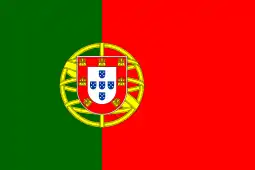 President of Portugal Mário Soares
President of Portugal Mário Soares Vice President of Poland Kazimierz Barcikowski
Vice President of Poland Kazimierz Barcikowski Foreign Minister of Austria Alois Mock
Foreign Minister of Austria Alois Mock Foreign Minister of Malta Vincent Tabone
Foreign Minister of Malta Vincent Tabone Foreign Minister of Switzerland Rene Felber
Foreign Minister of Switzerland Rene Felber Prime Minister of Turkey Turgut Ozal
Prime Minister of Turkey Turgut Ozal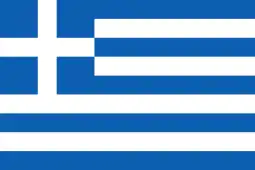 President of Greece Christos Sartzetakis
President of Greece Christos Sartzetakis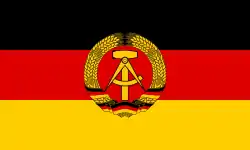 Vice President of East Germany Manfred Gerlach
Vice President of East Germany Manfred Gerlach President of West Germany Richard von Weizsäcker
President of West Germany Richard von Weizsäcker President of Ireland Patrick J. Hillery
President of Ireland Patrick J. Hillery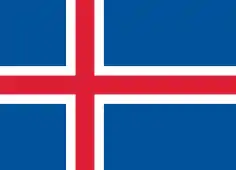 President of Iceland Vigdis Finnbogadottir
President of Iceland Vigdis Finnbogadottir First Vice Chairman of the Presidium of the Supreme Soviet Anatoly Lukyanov
First Vice Chairman of the Presidium of the Supreme Soviet Anatoly Lukyanov President of Finland Mauno Koivisto
President of Finland Mauno Koivisto.svg.png.webp) Vice President of the Presidency of Yugoslavia Stane Dolanc
Vice President of the Presidency of Yugoslavia Stane Dolanc.svg.png.webp) Vice President of Bulgaria Petur G. Tanchev
Vice President of Bulgaria Petur G. Tanchev.svg.png.webp) Vice President of Romania Manea Manescu
Vice President of Romania Manea Manescu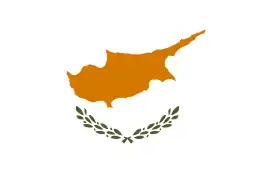 President of Cyprus George Vassiliou
President of Cyprus George Vassiliou Deputy Prime Minister of Czechoslovakia Pavol Hrivnak
Deputy Prime Minister of Czechoslovakia Pavol Hrivnak Cardinal of Vatican City Silvio Oddi
Cardinal of Vatican City Silvio Oddi President of Israel Chaim Herzog
President of Israel Chaim Herzog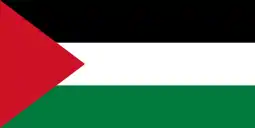 President of Palestine Yasser Arafat
President of Palestine Yasser Arafat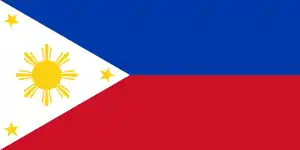 President of Philippines Corazon Aquino
President of Philippines Corazon Aquino Prime Minister of Pakistan Benazir Bhutto
Prime Minister of Pakistan Benazir Bhutto.svg.png.webp) President of Comoros Salim Ben Ali
President of Comoros Salim Ben Ali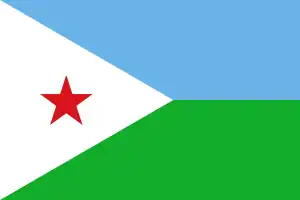 Prime Minister of Djibouti Barkat Gourad Hamadou
Prime Minister of Djibouti Barkat Gourad Hamadou Deputy Prime Minister of Gabon Georges Rawiri
Deputy Prime Minister of Gabon Georges Rawiri President of Ghana Jerry Rawlings
President of Ghana Jerry Rawlings President of Togo Gnassingbe Eyadema
President of Togo Gnassingbe Eyadema Prime Minister of Tunisia Hedi Baccouche
Prime Minister of Tunisia Hedi Baccouche President of Uganda Yoweri Museveni
President of Uganda Yoweri Museveni President of Zaire Mobutu Sese Seko,[6]
President of Zaire Mobutu Sese Seko,[6] President of Zambia Kenneth Kaunda
President of Zambia Kenneth Kaunda President of Zimbabwe Robert Mugabe
President of Zimbabwe Robert Mugabe President of Egypt Hosni Mubarak
President of Egypt Hosni Mubarak President of Nigeria Ibrahim Babangida
President of Nigeria Ibrahim Babangida President of Kenya Daniel arap Moi
President of Kenya Daniel arap Moi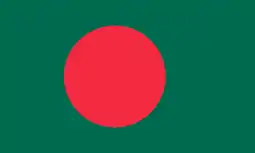 President of Bangladesh H. M. Ershad
President of Bangladesh H. M. Ershad.svg.png.webp) Foreign Minister of Burma U Pe Thein
Foreign Minister of Burma U Pe Thein.svg.png.webp) Prime Minister of South Korea Kang Young Hoon
Prime Minister of South Korea Kang Young Hoon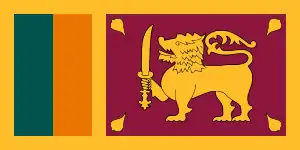 President of Sri Lanka Ranasinghe Premadasa and predecessor J. R. Jayewardene
President of Sri Lanka Ranasinghe Premadasa and predecessor J. R. Jayewardene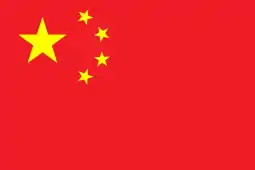 Premier of the People's Republic of China Li Peng
Premier of the People's Republic of China Li Peng Vice President of Iran Mostafa Mir-Salim
Vice President of Iran Mostafa Mir-Salim%253B_Flag_of_Syria_(1963%E2%80%931972).svg.png.webp) Vice President of Iraq Taha Marouf
Vice President of Iraq Taha Marouf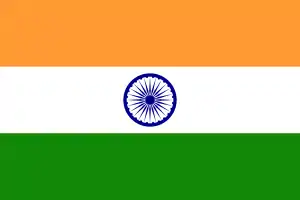 President of India Ramaswamy Venkataraman
President of India Ramaswamy Venkataraman President of Indonesia Suharto
President of Indonesia Suharto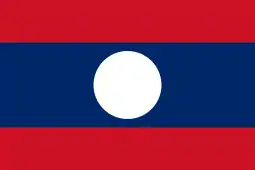 Vice President of Laos Phoun Sipaseut
Vice President of Laos Phoun Sipaseut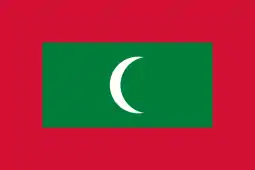 President of Maldives Maumoon Abdul
President of Maldives Maumoon Abdul.svg.png.webp) President of Mongolia Lodongiyn Rinchin
President of Mongolia Lodongiyn Rinchin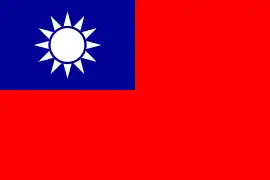 Foreign Minister of the Republic of China (Taiwan) Chang Pao-shu
Foreign Minister of the Republic of China (Taiwan) Chang Pao-shu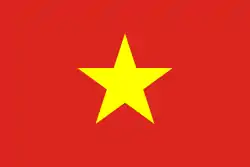 Vice President of Vietnam Lê Quang Đạo
Vice President of Vietnam Lê Quang Đạo Prime Minister of Singapore Lee Kuan Yew
Prime Minister of Singapore Lee Kuan Yew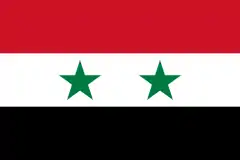 President of Syria Hafez al-Assad
President of Syria Hafez al-Assad
Pardons
To mark the funeral, the government pardoned 30,000 people convicted of minor criminal offenses. The pardons also allowed an additional 11 million people to recover such civil rights as the right to vote and run for public office, which they had lost as a punishment for offenses.[2]
Protests
The late emperor's funeral, like the man it honored, was dogged by bitter memories of the past. Many Allied veterans of World War II regarded Hirohito as a war criminal and called upon their countries to boycott the funeral.[7] Nevertheless, of the 166 nations invited to send representatives, all but three accepted.[8] Some Japanese, including a small Christian community, constitutional scholars and opposition politicians, denounced the pomp at the funeral as a return to past exaltation of the emperor and contended that the inclusion of Shinto rites violated Japan's post-war separation of church and state. Some groups, opposed to the Japanese monarchy, also staged small protests.[3]
The Shinto rites, witnessed by official funeral guests and held at the same site as the state-sponsored portion of the funeral, prompted criticism that the Government was violating the constitutional separation of state and religion. This separation is especially important in Japan because Shinto was used as the religious basis for the ultra-nationalism and militaristic expansion of wartime Japan. Some opposition party delegates to the funeral boycotted that part of the ceremony.[3] During the funeral procession in Tokyo, a man stepped into the street as the cortege approached. He was quickly apprehended by police who hustled him away.[2] At 1:55 pm, half an hour before the hearse carrying the late emperor's casket passed by, policemen patrolling the highway leading to the Musashi Imperial Graveyard heard an explosion and found debris scattered along the highway. They quickly cleared away the rubble, and the hearse passed without incident. In total, the police also arrested four people, two for trying to disrupt the procession.[3]
See also
References
- Hirohito's survivors
- Ronald E. Yates, World Leaders Bid Hirohito Farewell, Chicago Tribune, 24 February 1989 (online), accessed 13 Oct 2015
- Susan Chira, With Pomp and on a Global Stage, Japanese Bury Emperor Hirohito, The New York Times, 24 February 1989 (online), accessed 13 Oct 2015
- Attali, Jacques, 1995, Verbatim, Volume 3, Fayard
- "Paying Respects: A Global Roll-Call". The New York Times. 24 February 1989. Retrieved 1 September 2016.
- Meredith, Martin. The Fate of Africa: A History of the Continent Since Independence (Revised and Updated), p. 308.
- Slavin, Stewart (20 February 1989). "Attending Hirohito funeral a touchy issue". UPI. United Press International. Archived from the original on 2 September 2016. Retrieved 2 September 2016.
- Schoenberger, Karl (24 February 1989). "World Leaders Pay Respects at Hirohito Rites". Los Angeles Times. Archived from the original on 4 September 2016. Retrieved 4 September 2016.